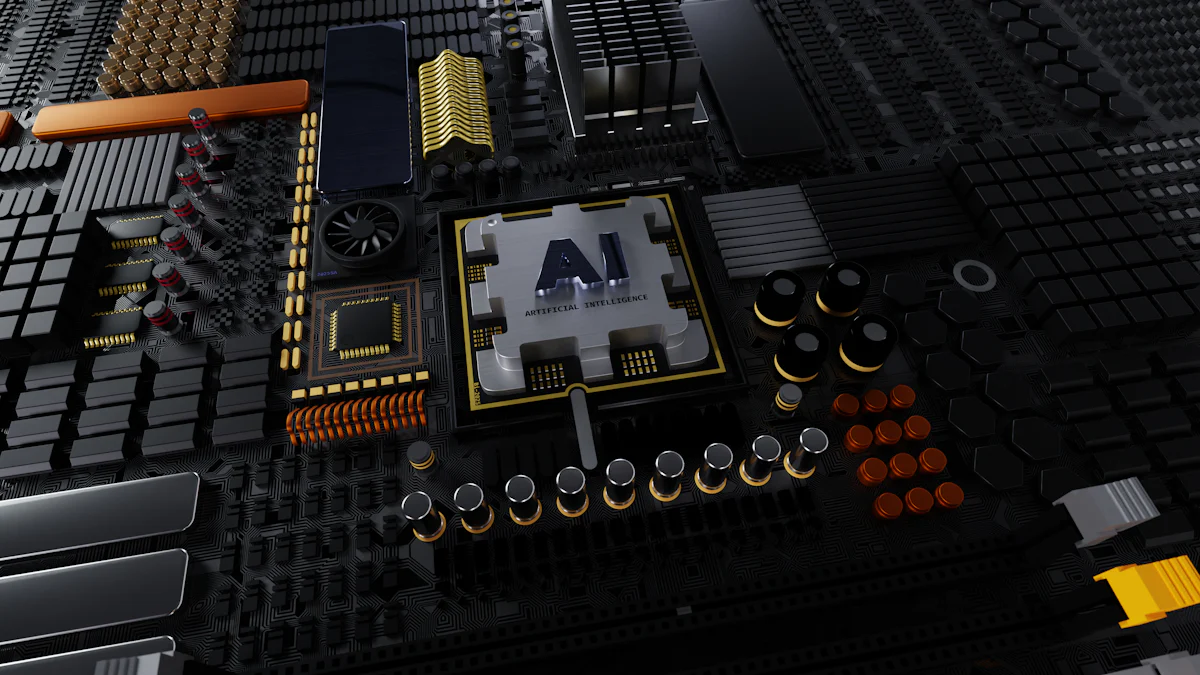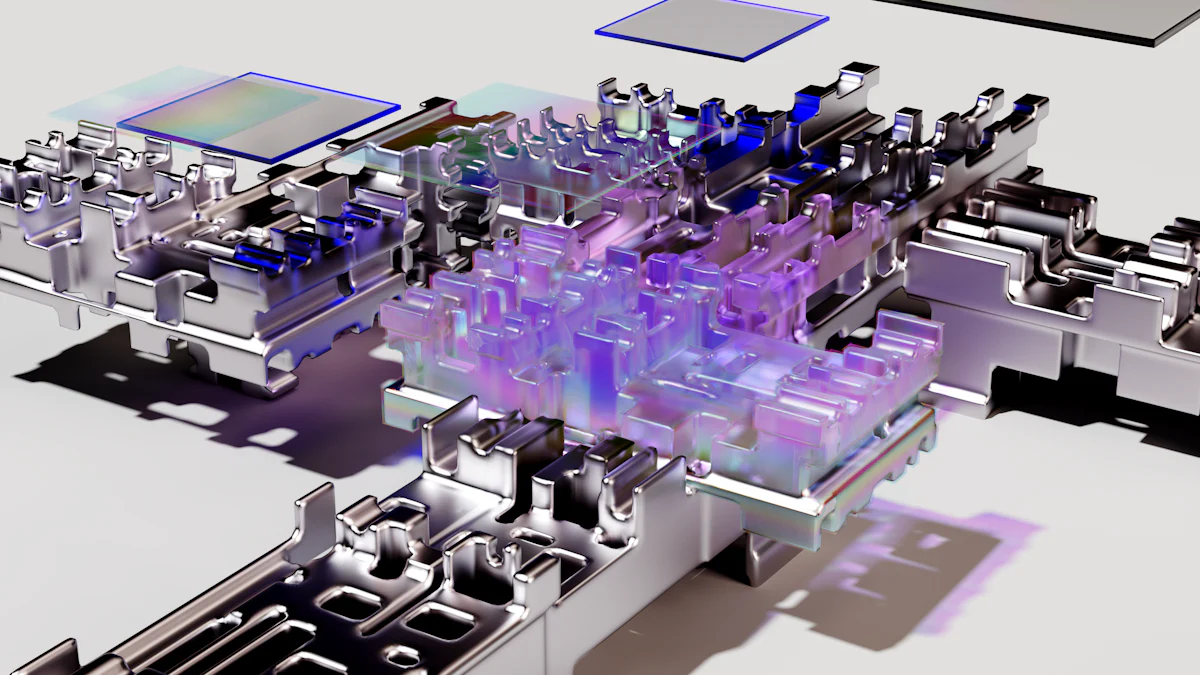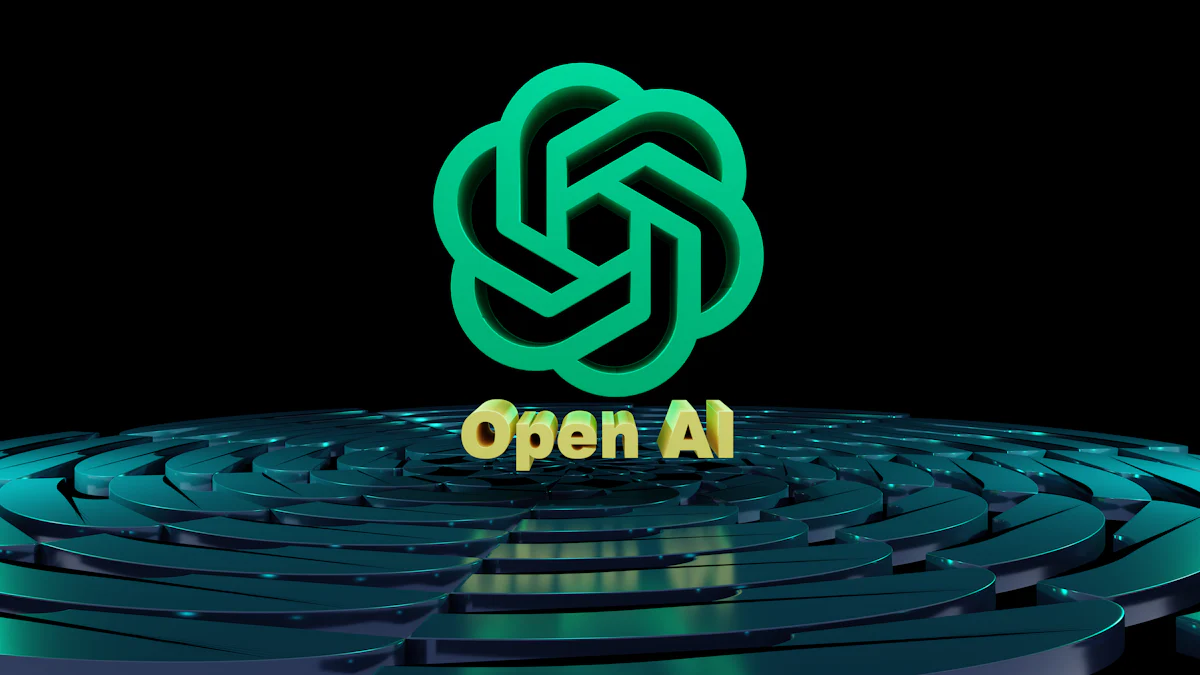Top 5 Open-Source Generative AI Models You Must Know

Open-Source Generative AI models have become essential tools in today's tech-driven world. You might wonder why these models matter. First, they offer transparency and trust, allowing you to see and modify the code. This openness fosters innovation and collaboration. Second, they provide a cost-effective alternative to proprietary models, which often remain locked within big tech companies. As a result, understanding these models empowers you to harness their potential, ensuring you stay ahead in the rapidly evolving AI landscape.
1. Stable Diffusion

Description
Overview of Stable Diffusion
Stable Diffusion stands out as a remarkable Open-Source Generative AI model. It excels in creating high-quality images from textual descriptions. You can access it through platforms like HuggingFace, which makes it easy to explore and experiment with. This model has gained popularity due to its ability to produce detailed and realistic images, making it a favorite among developers and artists alike.
Development and Release
The development of Stable Diffusion involved collaboration among various experts in the field of AI. They aimed to create a model that not only generates images but also remains accessible to everyone. Released as an open-source project, it allows you to dive into its code and understand its workings. This transparency fosters a community of innovation and improvement, ensuring that the model evolves with user contributions.
Features
Image Generation Capabilities
Stable Diffusion's image generation capabilities are impressive. It can transform simple text prompts into vivid and intricate images. This feature opens up endless possibilities for creative projects. Whether you're an artist looking to visualize concepts or a developer seeking to enhance applications, this model provides the tools you need.
Open-Source Accessibility
One of the key advantages of Stable Diffusion is its open-source nature. You can download and modify the model to suit your specific needs. Platforms like HuggingFace and libraries such as Diffusers offer easy access, while tools like ComfyUI provide no-code interfaces for those less familiar with programming. This accessibility ensures that you can leverage the model's power without barriers.
Applications
Use Cases in Various Industries
Stable Diffusion finds applications across multiple industries. In the entertainment sector, it aids in creating visual effects and animations. The fashion industry uses it to design and visualize clothing lines. Even in education, it helps in developing engaging visual content for learning materials. Its versatility makes it a valuable asset in any field requiring visual creativity.
Examples of Implementations
Numerous examples highlight the impact of Stable Diffusion. Artists use it to generate artwork that pushes creative boundaries. Developers integrate it into apps to offer personalized image generation features. Companies employ it to create marketing visuals that captivate audiences. These implementations showcase the model's potential to transform ideas into reality.
2. Llama 3
Description
Overview of Llama 3
Llama 3 emerges as a powerful Open-Source Generative AI model, building on the success of its predecessor, Llama 2. You will find it particularly useful for tasks that require advanced language processing. This model stands out due to its ability to handle complex language tasks with remarkable efficiency. It offers a range of parameters, from smaller models that are lightweight and fast to larger ones that provide more detailed outputs. This flexibility allows you to choose the model size that best fits your needs.
Development and Release
Meta developed Llama 3 with a focus on enhancing language understanding and generation. The development team aimed to create a model that not only excels in performance but also remains accessible to the community. Released as an open-source project, Llama 3 invites you to explore its capabilities and contribute to its ongoing improvement. This open-source nature ensures that you can modify and adapt the model to suit specific applications, fostering a collaborative environment for innovation.
Features
Advanced Language Processing
Llama 3's advanced language processing capabilities make it a standout choice for various language tasks. You can rely on it for tasks such as summarization, translation, and content generation. The model's architecture allows it to understand and generate human-like text, making it a valuable tool for developers and researchers alike. Its performance in language tasks often rivals that of other leading models, providing you with a reliable option for your projects.
Open-Source Community Support
The open-source community plays a crucial role in the development and enhancement of Llama 3. By participating in this community, you gain access to a wealth of resources and support. You can collaborate with other users to improve the model, share insights, and develop new applications. This community-driven approach ensures that Llama 3 continues to evolve and adapt to the changing needs of its users, making it a dynamic and versatile Open-Source Generative AI model.
Applications
Use Cases in Language Tasks
Llama 3 finds applications in a wide range of language tasks. You can use it for creating chatbots that engage users in natural conversations or for developing tools that assist in language learning. Its ability to generate coherent and contextually relevant text makes it ideal for content creation, whether you're writing articles, scripts, or marketing materials. The model's versatility ensures that it can be applied to various industries, from education to entertainment.
Examples of Implementations
Numerous implementations highlight the potential of Llama 3. Developers have integrated it into applications that require real-time language translation, providing users with instant and accurate translations. In the field of education, Llama 3 assists in creating interactive learning materials that adapt to the needs of individual learners. These examples demonstrate how Llama 3 can transform language tasks, offering you innovative solutions that enhance productivity and creativity.
3. Mistral AI
Description
Overview of Mistral AI
Mistral AI stands as a versatile Open-Source Generative AI model, gaining recognition for its adaptability across various domains. You will find it particularly useful for tasks that require a blend of creativity and precision. This model excels in generating content that spans from textual data to complex simulations. Its design allows you to harness its capabilities for a wide range of applications, making it a valuable tool in your AI toolkit.
Development and Release
The development of Mistral AI involved a collaborative effort among AI experts who aimed to create a model that could adapt to diverse needs. Released as an open-source project, Mistral AI invites you to explore its functionalities and contribute to its growth. This open-source framework ensures that you can modify and enhance the model, fostering a community-driven approach to innovation.
Features
Versatile AI Capabilities
Mistral AI offers a broad spectrum of capabilities that cater to different industries. You can use it for tasks such as autonomous navigation, where it aids in designing systems for security and surveillance operations. Its ability to process large language models (LLMs) enhances customer service, automates content creation, and improves language translation services. This versatility makes Mistral AI a powerful ally in your projects.
Open-Source Framework
The open-source nature of Mistral AI provides you with the freedom to customize and adapt the model to your specific requirements. You can access its code, modify it, and share your improvements with the community. This framework encourages collaboration and continuous development, ensuring that Mistral AI evolves to meet the changing demands of its users.
Applications
Use Cases in Diverse Fields
Mistral AI finds applications in a multitude of fields. In the realm of autonomous navigation, it plays a crucial role in developing systems for security and surveillance. The model's language processing capabilities enhance customer interactions and streamline content creation processes. You can also leverage it for improving translation services, making it a versatile tool across industries.
Examples of Implementations
Numerous implementations showcase the potential of Mistral AI. For instance, companies use it to design autonomous vehicles for security purposes, enhancing their operational efficiency. In customer service, Mistral AI automates responses, providing quick and accurate solutions to user queries. These examples highlight how Mistral AI can transform traditional processes, offering innovative solutions that drive progress.
4. GPT-2

Description
Overview of GPT-2
GPT-2, developed by OpenAI, stands as a significant milestone in the realm of Open-Source Generative AI models. You will find it particularly renowned for its text generation capabilities. This model can produce coherent and contextually relevant text, making it a valuable tool for various applications. Unlike its successor, GPT-4, which remains closed-source, GPT-2 offers transparency and accessibility, allowing you to explore and modify its code. This openness has fostered a vibrant community of developers and researchers who continuously enhance its functionalities.
Development and Release
OpenAI released GPT-2 in 2019, marking a pivotal moment in the development of Open-Source Generative AI. The model's release followed extensive research and testing to ensure its reliability and effectiveness. Initially, OpenAI withheld the full model due to concerns about potential misuse. However, they later released it, enabling you to access and experiment with its capabilities. This decision underscored the importance of balancing innovation with ethical considerations in AI development.
Features
Text Generation Capabilities
GPT-2 excels in generating human-like text, making it a powerful tool for various text-based tasks. You can use it for content creation, such as writing articles, scripts, or even poetry. Its ability to understand context and produce coherent text sets it apart from other models. While GPT-4 offers more advanced reasoning, GPT-2 remains a reliable choice for many applications due to its open-source nature and ease of use.
Open-Source Availability
One of GPT-2's most significant advantages is its open-source availability. You can download and modify the model to suit your specific needs. This accessibility encourages innovation and collaboration within the AI community. By engaging with the open-source community, you can contribute to the model's ongoing development and improvement, ensuring that it continues to evolve and adapt to new challenges.
Applications
Use Cases in Text-Based Tasks
GPT-2 finds applications in a wide range of text-based tasks. You can use it for developing chatbots that engage users in natural conversations or for creating tools that assist in language learning. Its ability to generate coherent and contextually relevant text makes it ideal for content creation, whether you're writing articles, scripts, or marketing materials. The model's versatility ensures that it can be applied to various industries, from education to entertainment.
Examples of Implementations
Numerous implementations highlight the potential of GPT-2. Developers have integrated it into applications that require real-time language translation, providing users with instant and accurate translations. In the field of education, GPT-2 assists in creating interactive learning materials that adapt to the needs of individual learners. These examples demonstrate how GPT-2 can transform language tasks, offering you innovative solutions that enhance productivity and creativity.
5. BLOOM
Description
Overview of BLOOM
BLOOM stands as a groundbreaking Open-Source Generative AI model. It is renowned for its multilingual capabilities, making it a versatile tool for language processing across different languages. You will find BLOOM particularly useful if you work in environments that require communication in multiple languages. This model supports a wide array of languages, allowing you to generate text that is both coherent and contextually relevant in various linguistic settings.
Development and Release
The development of BLOOM involved a collaborative effort from researchers and developers worldwide. They aimed to create a model that not only excels in language generation but also promotes open science. Released as an open-access project, BLOOM invites you to explore its functionalities and contribute to its growth. This initiative ensures that you can modify and enhance the model, fostering a community-driven approach to innovation.
Features
Multilingual Language Model
BLOOM's multilingual capabilities set it apart from other models. You can use it to generate text in numerous languages, making it an invaluable resource for global communication. This feature allows you to engage with diverse audiences, breaking down language barriers and facilitating cross-cultural interactions. Whether you're translating documents or creating content for international markets, BLOOM provides the tools you need to succeed.
Open-Science Initiative
The open-science initiative behind BLOOM encourages transparency and collaboration. By participating in this initiative, you gain access to a wealth of resources and support. You can collaborate with other users to improve the model, share insights, and develop new applications. This community-driven approach ensures that BLOOM continues to evolve and adapt to the changing needs of its users, making it a dynamic and versatile Open-Source Generative AI model.
Applications
Use Cases in Multilingual Contexts
BLOOM finds applications in a wide range of multilingual contexts. You can use it for developing chatbots that engage users in natural conversations across different languages. Its ability to generate coherent and contextually relevant text makes it ideal for content creation, whether you're writing articles, scripts, or marketing materials. The model's versatility ensures that it can be applied to various industries, from education to entertainment.
Examples of Implementations
Numerous implementations highlight the potential of BLOOM. Developers have integrated it into applications that require real-time language translation, providing users with instant and accurate translations. In the field of education, BLOOM assists in creating interactive learning materials that adapt to the needs of individual learners. These examples demonstrate how BLOOM can transform language tasks, offering you innovative solutions that enhance productivity and creativity.
Understanding open-source generative AI models is essential for anyone interested in AI. These models offer transparency, innovation, and accessibility. You can experiment freely, exploring their potential without constraints. By engaging with these models, you contribute to responsible AI development.
"Open-source models allow access to parameters... so that anyone can experiment with the models without constraint."
I encourage you to dive into these models. Experiment, innovate, and share your findings. Join the community, contribute your insights, and help shape the future of AI. Your involvement ensures these models continue to evolve and benefit everyone.
See Also
Essential Generative AI Models to Understand by 2024
Key Generative AI Vocabulary for Professionals
Comprehending Deep Learning within Generative AI
